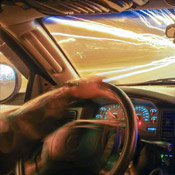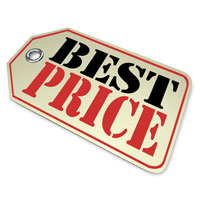
Are you a victim of high-priced car insurance? Trust us, you’re not alone. There are many car insurance companies to insure vehicles with, and although it’s nice to have a choice, too many choices makes it more difficult to get the best deal.
It’s a great practice to compare rates once or twice a year since rates are usually higher with each renewal. Just because you had the best deal a year ago there is a good chance you can find better rates now. You can find a lot of wrong information about car insurance online, so by reading this article, you’re going to learn some tested techniques to find cheap car insurance.
Be sure to get all your discounts
Auto insurance companies don’t necessarily list all their discounts very well, so we break down both the well known as well as the least known discounts you could be receiving. If you don’t get every credit possible, you’re paying more than you need to.
- Safe Drivers – Drivers who avoid accidents can pay as much as 50% less than drivers with accident claims.
- Anti-theft Discount – Cars that have factory anti-theft systems help deter theft and qualify for as much as a 10% discount.
- Lower Rates for Military – Having a family member in the military may qualify for rate reductions.
- Discount for Life Insurance – Larger companies have better rates if you take out life insurance from them.
- Seat Belts Save – Requiring all passengers to wear their seat belts can save up to 15% off your PIP or medical payments premium.
Drivers should understand that most discount credits are not given to the entire cost. Some only reduce the cost of specific coverages such as liability and collision coverage. So despite the fact that it appears having all the discounts means you get insurance for free, it just doesn’t work that way.
To see a list of insurance companies who offer car insurance discounts in Richfield, click this link.
How do I know if I need professional advice?
When buying coverage for your vehicles, there really is not a single plan that fits everyone. Every insured’s situation is different and a cookie cutter policy won’t apply. These are some specific questions could help you determine whether you could use an agent’s help.
- Can I afford to pay high deductible claims out of pocket?
- Am I getting all the discounts available?
- Why am I required to buy high-risk coverage?
- Am I covered when renting a car or should I buy coverage from the car rental agency?
- Does my car insurance cover rental cars?
- How do I file an SR-22 for a DUI in Minnesota?
- Can I rate high risk drivers on liability-only vehicles?
If you don’t know the answers to these questions but a few of them apply, you might consider talking to an insurance agent. If you don’t have a local agent, take a second and complete this form or go to this page to view a list of companies. It’s fast, doesn’t cost anything and you can get the answers you need.
Are car insurance companies telling the truth?
Minnesota consumers get pounded daily by advertisements for car insurance savings by companies like State Farm, Allstate and Geico. They all have a common claim about savings if you move to them.
How does each company make almost identical claims? This is how they do it.
Different companies have a preferred profile for the type of customer that earns them a profit. A good example of a driver they prefer could be between 30 and 50, is a homeowner, and drives less than 10,000 miles a year. Any new insured who meets those qualifications is entitled to the best price and is almost guaranteed to save when switching.
Potential customers who don’t qualify for the requirements will have to pay a more expensive rate and ends up with the driver buying from a lower-cost company. The ads state “people who switch” but not “drivers who get quotes” save that much. This is how insurance companies can confidently advertise the savings. Because of the profiling, it’s extremely important to get a wide range of price quotes. It’s not possible to predict which insurance companies will fit your personal profile best.
Online resources for education
Additional detailed information can be read at the Minnesota Department of Commerce website. Minnesota drivers can find disaster information, read consumer alerts, and learn about insurance regulations.
Also read more on III.org’s auto insurance page and CarInsuranceDIY.com.
Coverages available on your car insurance policy
Learning about specific coverages of car insurance aids in choosing the best coverages for your vehicles. Car insurance terms can be confusing and reading a policy is terribly boring. Shown next are the usual coverages found on most car insurance policies.
Collision coverage protection
Collision coverage pays for damage to your vehicle caused by collision with another car or object. You have to pay a deductible and the rest of the damage will be paid by collision coverage.
Collision coverage protects against claims such as driving through your garage door, hitting a mailbox, hitting a parking meter and colliding with another moving vehicle. Collision coverage makes up a good portion of your premium, so you might think about dropping it from lower value vehicles. Drivers also have the option to raise the deductible to get cheaper collision coverage.
Medical payments coverage and PIP
Medical payments and Personal Injury Protection insurance kick in for immediate expenses for prosthetic devices, hospital visits, pain medications and ambulance fees. They can be used in conjunction with a health insurance program or if you lack health insurance entirely. Coverage applies to both the driver and occupants as well as any family member struck as a pedestrian. PIP coverage is not universally available and may carry a deductible
Uninsured/Underinsured Motorist coverage
This gives you protection from other motorists when they do not carry enough liability coverage. Covered claims include medical payments for you and your occupants as well as damage to your vehicle.
Since a lot of drivers only purchase the least amount of liability that is required (30/60/10 in Minnesota), it only takes a small accident to exceed their coverage. So UM/UIM coverage should not be overlooked.
Liability
This coverage will cover damage that occurs to people or other property. Liability coverage has three limits: bodily injury for each person, bodily injury for the entire accident, and a limit for property damage. As an example, you may have values of 50/100/50 which stand for $50,000 bodily injury coverage, a total of $100,000 of bodily injury coverage per accident, and $50,000 of coverage for damaged propery.
Liability coverage protects against things like loss of income, repair costs for stationary objects and funeral expenses. The amount of liability coverage you purchase is your choice, but it’s cheap coverage so purchase as much as you can afford. Minnesota state law requires minimum liability limits of 30,000/60,000/10,000 but it’s recommended drivers buy more coverage.
Comprehensive coverage
Comprehensive insurance coverage pays to fix your vehicle from damage OTHER than collision with another vehicle or object. A deductible will apply then your comprehensive coverage will pay.
Comprehensive can pay for claims like theft, rock chips in glass and vandalism. The maximum amount you can receive from a comprehensive claim is the actual cash value, so if the vehicle’s value is low consider removing comprehensive coverage.
More quotes mean more savings
When you buy insurance online, don’t be tempted to sacrifice coverage to reduce premiums. There are a lot of situations where someone dropped uninsured motorist or liability limits only to discover later that they should have had better coverage. Your aim should be to buy enough coverage at a price you can afford while still protecting your assets.
Throughout this article, we presented quite a bit of information on how to save on car insurance. The key concept to understand is the more quotes you get, the better your comparison will be. You may even discover the biggest savings come from some of the smallest insurance companies. Smaller companies can often provide lower rates in certain areas than their larger competitors like State Farm, Geico and Nationwide.

